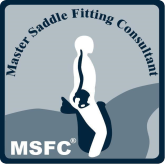G&T Saddles work with predominantly traditional wool flocked saddles.
We work closely with Albion England Saddle Makers & their sponsored riders
-
ABOUT SADDLE FLOCKING
Wool is a natural fibre which provides a soft ‘spring’ effect in the panels of the saddle, adapting well to a horses back, taking into account the physiological changes which occur in a horse when in work. Wool is a natural fibre being bio-degradable and sustainable. Wool is also breathable, allowing it to absorb and release moisture keeping the horses back cooler. Various types of flocking wool are available. Traditional long-fibre white wool is the softest. Jacob’s wool is a grey, slightly coarser wool which is more commonly used. Synthetic wools are often seen; a combination of natural and manmade fibres; however at G&T Saddles we favour the traditional long-fibre and Jacob’s wools.
Just as good, soft, well balanced flocking may have a progressive effect, poor, hard, lumpy or uneven flocking consequently may have a detrimental effect. Panel flocking adjustments can be made in accordance with a change in condition, or muscle development (or perhaps loss) of a horse. Changes may occur due to training, alterations in workload and therefore fitness levels, age, discipline, seasonal, nutrition and diet, rider influence, environment or further factors.
Owing to its natural, soft form, flocking becomes compressed over time and requires re-balancing. This once again ‘lifts’ the saddle and provides spring back into the panels. Riders are often of the belief that the greatest pressure is exerted under the rear of the saddle and where the rider is seated. Conversely the greatest pressure is exerted under the stirrup bars and behind the horses’ shoulder. This is where the saddle is seen to ‘drop’ in front, appearing too wide at the front and lifting at the back. The mistake is made by some to correct this by filling in the back of the saddle with a pad. This creates a greater force to the horse behind its shoulder. The saddle requires flocking and lifting at the front to return it to its correct point of balance. This can be completed on site with various tools. The greater the use a saddle may have or forces upon it, the greater the need for regular flocking and consequently totally re-flocking. A brand new saddle, with fresh, soft flocking with ALWAYS require flocking and re-balancing. We recommend to have this done between 5 and 12 weeks dependant upon use.
Slight asymmetries in horse and/or rider can cause saddle slip or imbalance. The saddle will be caused to exert pressure on one side more than the other. Adjusting the flock to rebalance the saddle is possible without the need for pads or shimming. There are naturally circumstances however where shims are a requirement to reinstate balance ideally on a temporary basis!
The saddle and its’ flocking will come to a point when it has been rebalanced and lifted a number of times and the flocking is hard and compacted. Then the saddle requires a complete re-flock, similar to a car receiving an MOT! The saddle is taken completely apart and all the old, hard compressed flock is replaced with new, soft flock. This requires time spent in the workshop to complete.
Maintaining and being aware of the balance of your saddle on your horse, and the level and condition of your flocking can greatly contribute to the health of your horse’s back. G&T Saddles are proud to officially support the Campaign for Wool, a global endeavour initiated by its patron, His Royal Highness The Prince of Wales. The Campaign aims to raise awareness amongst consumers about the natural, renewable and biodegradable benefits offered by the fibre.
Services
- Saddle check and saddle fitting from £50 depending upon location
- Saddle Flocking from £30 - £50
- Full Saddle Re-Flock from £130 - £150
We accommodate all levels of horse and rider combinations from beginners through to professional riders.


